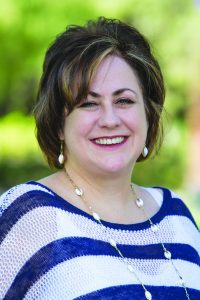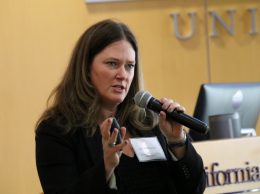Businesses must function autonomously

Linda-Marie Sundstrom
By Linda-Marie Sundstrom
In 2015, point-of-sale computers at Starbucks went down — resulting in outages at 8,000 stores in the United States and Canada. Baristas were unable to accept payment for drinks so they either gave the product away or closed their stores. They couldn’t function autonomously.
During disasters, businesses can find themselves without power, landlines, cell phones and more. If businesses are not prepared to be autonomous, the result can be loss of revenue or worse.
Many businesses have devoted attention to the large tasks of protecting records off-site and enacting major preparedness measures. But it’s the little things, the day-to-day tasks that can be overlooked. Take the Starbucks example. Once the registers malfunctioned, no one knew how to manually calculate the sale of a coffee or muffin. If you’re not familiar with manual calculations of sales, ask a friend who’s over 45 years old how stores operated before scanners were invented. While you’re at it, you may want to ask about those metal contraptions that make an imprint of your credit cards on something called carbon paper.
If Starbucks had prepared for such an emergency, the stores could have shifted to manual operations and eliminated the loss of revenue estimated to be millions of dollars during the short outage.
In additional to preparing for possible outages, companies need to prepare for smaller emergencies that can quickly eat into profits. These may not be large-scale preparedness projects but can make a difference for your employees, your profits and the community.
Here are a few ideas to get started on thinking about smaller issues that may result in big benefits:
Maps for drivers: We have all grown to depend on GPS systems to tell us where to go and how to get there. Many companies have dedicated significant money into high-tech routing systems.
What if there’s a problem with the GPS system? Can drivers complete their route? Do they have a backup plan to use paper maps and manual routing schedules? Do they know how to read paper maps — those items that are nearly impossible to re-fold, but can get you from Point A to Point B without the need for a GPS?
Radios for communication: Landlines, cell phones and the Internet may be inoperable during emergencies. How can you call for help if the phones don’t work? How can you reach your family to see if they are OK? How can you reach your business sites to see if anyone needs help? The one system that will still be working when all other forms of communication have failed is the Amateur Radio Service, aka ham radios. Now you may need to talk to a friend who’s over 55 years old. Many emergency operations such as fire, police and hospitals have banks of ham radios at their locations available to receive calls during an emergency. Ham radio operators must be licensed by the Federal Communications Commission by passing a 35-question, multiple-choice test. Most local ham radio groups provide free classes to prepare for the exam and the test is only $15.
Emergency-prepared employees: How many people are in your city? 50,000? 100,000? More? How many firefighters are on duty at any given time? 20? 30? Let’s do the math. In an 8.0 magnitude earthquake, how long will it take for someone to come to the rescue? One hour? Six hours? More? What will you do in the meantime? Are your employees prepared with basic survival skills and supplies?
One solution is to contact your local Community Emergency Response Team (CERT) program through the city and provide free Federal Emergency Management Agency training to your employees.
The word for businesses is autonomy. Can you operate if a main point-of-sale computer crashes? Can you route drivers if the GPS malfunctions? Can you communicate if phone lines go down?
Can you take care of your employees if help is hours away? Can you be autonomous to protect profits, employees and property? For more information, contact your city or county’s emergency preparedness operations and be autonomous.
• Linda-Marie Sundstrom, who has a doctorate in public administration, just finished her third year teaching in the Master of Public Policy and Administration program at California Lutheran University.












